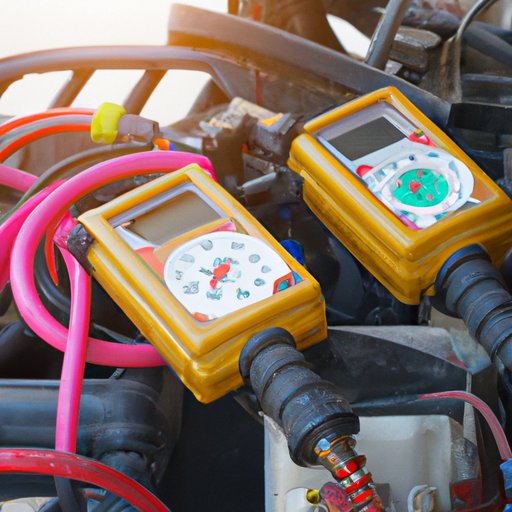Introduction
As the summer heat gets more intense, you definitely don’t want to be caught driving in a car without air conditioning. Unfortunately, many cars’ AC systems begin to lose their cool over time, and the solution is often a costly trip to a repair shop. But did you know that you can recharge your car’s AC system at home? Not only will it save you money, but it’s also a straightforward process that doesn’t require any special skills. However, it’s important to follow certain safety precautions before and during the process to avoid any harm or damage.
Materials Needed
Before you begin, ensure that you have the necessary items for the process. You’ll need:
- R134a refrigerant
- A pressure gauge or monitor for refrigerant pressure levels
- A can tap (also known as a piercing valve) for R134a refrigerant
- A thermometer for measuring the temperature of the air coming out of the vents
You can purchase these materials at most auto parts stores, big box stores, or online. Additionally, be sure to use proper safety equipment like gloves and goggles.
Preparation
Before you begin, locate your car’s low-pressure port. It’s usually located on the larger diameter hose or tubing between the compressor and the accumulator or receiver-drier (a silver cylinder near the firewall). Don’t confuse it with the high-pressure port, which is usually located on the smaller diameter hose running to the condenser at the front of the car.
It’s also essential to prepare your car before starting the work. Turn the engine off and disconnect the negative (black) cable from your car battery. Doing so will protect you and your car’s electrical system from any accidental short circuits.
Adding Refrigerant
Once you’re ready, attach the can tap to the can of refrigerant and then attach the other end to the low-pressure port of your AC system. Slowly turn the valve atop the can to let the refrigerant start seeping in. Make sure you follow the manufacturer’s instructions on the can of refrigerant. In most cases, it’s advisable to hold the can upside down while charging the system.
You’ll want to watch the pressure gauge or monitor to ensure that you don’t overcharge the system. Overcharging can result in damaging the compressor. Once you’re satisfied that the system has the right amount of refrigerant, remove the can from the can tap and close the valve.
Testing the AC System
The last step is testing the AC system. Turn on your car and the AC system and let it run for some time. You should notice the vents blowing cold air. Use a thermometer to measure the temperature of the air, which should be around 35-45 degrees Fahrenheit. Make sure you set the airflows to their maximum velocity and turn off the recirculation, as that could result in a false reading.
If you notice that the air isn’t as cold as you were expecting, it’s possible that you didn’t add enough refrigerant, or there could be a more significant issue like a refrigerant leak or a clogged condenser. You should have this checked by a professional if this occurs.
Safety Reminders
It’s always important to keep safety in mind when working on a car’s AC system. Always use gloves and goggles to prevent an accidental refrigerant leak from making contact with your skin or eyes. You also need to be mindful of refrigerant’s harmful effect on the environment. Be sure to dispose of any used or unused refrigerant properly.
Finally, if you aren’t comfortable with working on your car’s AC system, or you can’t seem to find the root cause of the problem, it’s best to consult a professional. They can diagnose the issue faster and recommend the best course of action.
Conclusion
Recharging your car’s AC system can seem intimidating at first, but as you can see, it’s actually a simple process. With the right tools and materials, you can quickly get your AC system leak-free and blowing cool air again. But it’s also essential to take necessary precautions and follow proper safety protocols. You should always consult with a professional if you’re unsure or can’t find the root problem. Lastly, remember that it’s crucial to take care of your car’s AC system and regularly maintain it to avoid any costly repairs in the long run.
(Note: Is this article not meeting your expectations? Do you have knowledge or insights to share? Unlock new opportunities and expand your reach by joining our authors team. Click Registration to join us and share your expertise with our readers.)
